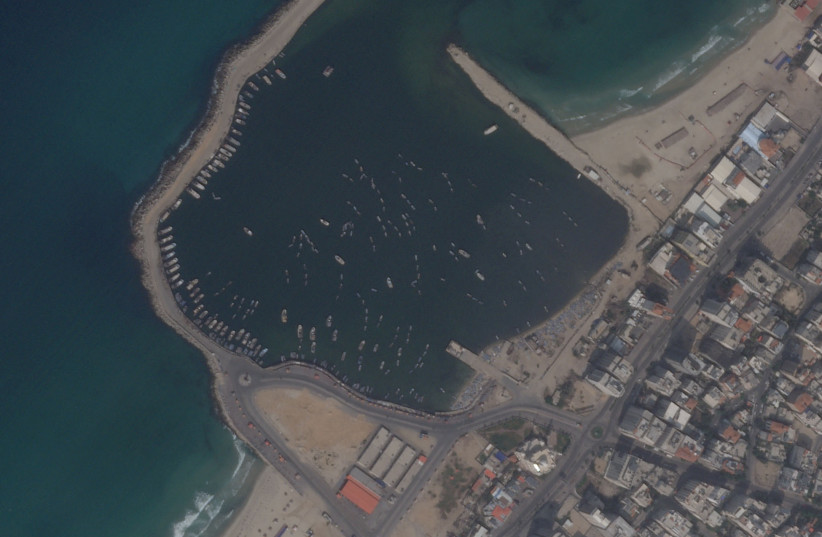As plans take shape for the US to play a greater role in supporting humanitarian aid to Gaza, the idea of a floating pier to sit off the coast of Gaza to bring in the aid is the latest initiative.
The US is mobilizing to construct a kind of floating dock that would enable aid to be brought to Cyprus. This follows US airdrops that have also brought in food to Gaza. This is an unprecedented attempt by the US to aid locals on the ground and it brings together many unique capabilities that the US has.
On the one hand, it was unexpected this would happen in Gaza, but it is also a good chance for the US to conduct these operations and work out any problems that may occur.
On the other, this illustrates that even though the US wanted to pivot away from the Middle East, the conflict in Gaza has now drawn the US back in.

The challenges faced by the United States
Now, some of the challenges will be working with different groups and NGOs to bring in the aid. According to VOA, “a US charity said it was loading aid for Gaza onto a boat in Cyprus, the first shipment to the war-ravaged territory along a maritime corridor the EU Commission hopes will open this weekend. The Spanish-flagged vessel Open Arms docked three weeks ago in the port of Larnaca in Cyprus, the closest European Union country to the Gaza Strip.”
The report notes that "World Central Kitchen teams are in Cyprus loading pallets of humanitarian aid onto a boat headed to northern Gaza," the charity said Friday in a statement. "We have been preparing for weeks alongside our trusted NGO partner Open Arms for the opening of a maritime aid corridor that would allow us to scale our efforts in the region," it said.
This is important because it’s essential that different charities, rather than the usual suspects, work in Gaza. It has been shown that aid entering southern Gaza is generally hijacked by Hamas gunmen. Many international organizations in the past partnered with Hamas. It is not known if Hamas keeps the aid or even purposely slows down delivery to create a crisis. An independent way to bring aid to Gaza is important.
According to a briefing from the White House, “we continue to work to increase the amount of aid flowing through existing border crossings at Rafah and Kerem Shalom. And over recent days, at our request, the government of Israel has prepared a new land crossing directly into northern Gaza. This third crossing will allow for aid to flow directly to the population in northern Gaza that is in dire need of assistance.”
The US has already done three airdrops of 192 bundles of aid with 112,896 meals. The partners for this include Jordan, Egypt, France, the Netherlands and Belgium.
Cyprus's crucial role
Now, Cyprus is going to play a potentially critical role in helping facilitate the aid moving to Gaza. Cyprus and Israel have increasingly close ties. According to the White House, the current initiative is called the Amalthea initiative proposed by Cyprus provides for a platform at Larnaca to move the aid to Gaza. The maritime corridor is also backed by other key players such as the European Commission, Germany, Greece, Italy, the Netherlands, the Republic of Cyprus, the United Arab Emirates, the United Kingdom, and the United States.
It will take weeks to build the floating pier. How the goods will get from the pier to the land is less clear. It appears Israel would still have to secure that corridor. This proved a challenge on land when a stampede of people trying to reach trucks providing aid in northern Gaza led to the latest decision of the US to airdrop food. Reports say the US 7th Transportation Brigade will build the pier as part of the US Army’s Joint Logistics Over-the-Shore capability, according to Politico’s Lara Seligman.
The US has practiced this for years in other scenarios.
For instance, back in 2015 US Marines and elements of the 7th Transportation Brigade from Fort Eustis went to Korea where they built a large floating pier. This work also involved the “Combined Joint Logistics Over-The-Shore” capability. The temporary pier is connected to a barge and then connected to the shore. This happened at Amyeon breach. The pier was 560 meters long. It’s not clear how large the one slated for Gaza will be.
Clearly, the operation has risks. If it works, the US may end up having a longer-term role. If the aid can help feed a million or more Gazans, this could end the dependency on southern Gaza as a conduit for aid, making a Rafah operation possible and also making it so Hamas gunmen cannot control all the aid to Gaza.
This could weaken the grip of some NGOs and UN organizations that have historically worked with Hamas and appear to have a symbiotic relationship with the terrorist group. It would appear any effort to defeat Hamas in Gaza requires that it not be able to control the border and decide who gets aid and how much aid enters. Hamas has an incentive to create a humanitarian crisis in Gaza because it wants a ceasefire so that it can return to power in Gaza.
